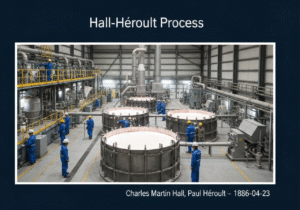A principle of lean fabrication that means ‘automation with a human touch’.
- Méthodologies : Ergonomie
Jidoka

Jidoka
- Amélioration continue, Juste à temps (JIT), Kaizen, Production allégée, Techniques de résolution de problèmes, Amélioration des processus, Gestion de la qualité, Système de production Toyota (TPS)
Objectif :
Comment il est utilisé :
- A lean manufacturing principle that empowers workers to stop the production line when they detect a problem. This helps to prevent defects from being passed down the line and allows for immediate problem-solving.
Avantages
- Improves quality by preventing defects; Empowers workers and promotes a culture of continuous improvement.
Inconvénients
- Can be difficult to implement in a traditional manufacturing environment; Requires a high level of trust and training.
Catégories :
- Lean Sigma, Fabrication
Idéal pour :
- Improving quality and empowering workers in a manufacturing environment.
Jidoka, often associated with the Système de production Toyota, is applied in various manufacturing sectors, including automotive, electronics, and consumer goods, where maintaining high quality is paramount. This methodology is typically initiated during the design and implementation phases of production systems, requiring involvement from frontline workers, management, and quality assurance teams to establish protocols for stopping the line. An example of Jidoka in action can be seen in automotive assembly lines, where operators are trained to identify anomalies, such as incorrect part placements or defects, leading to immediate intervention. The integration of Jidoka not only enhances product quality by ensuring that defects are caught early but also promotes a sense of ownership among workers, facilitating a culture where continuous improvement becomes part of daily operations. Such engagement encourages employees to contribute ideas for process optimizations and defect prevention, further strengthening the manufacturing system. Additionally, technology plays a supportive role in Jidoka applications, as automated systems and sensors can assist workers in identifying issues, allowing for quicker reaction times and reducing downtime. Organizations adopting this principle often experience reductions in waste and inefficiencies, translating into cost savings and improved customer satisfaction.
Principales étapes de cette méthodologie
- Identify abnormalities or defects during the production process.
- Stop the production line immediately when a problem is detected.
- Address the root cause of the issue on-site.
- Implement corrective actions to resolve the problem.
- Verify the effectiveness of the solution before resuming production.
- Standardize successful solutions for future reference.
- Encourage continuous feedback and discussions on process improvements.
Conseils de pro
- Implement real-time data analytics to support workers in identifying trends and potential issues before they escalate.
- Designate cross-functional teams that include operators, engineers, and quality experts to routinely analyze stoppages and develop robust root cause analysis protocols.
- Create a feedback loop where operators can share insights on their experiences, leading to actionable items that can improve processes and training programs.
Lire et comparer plusieurs méthodologies, nous recommandons le
> Référentiel méthodologique étendu <
ainsi que plus de 400 autres méthodologies.
Vos commentaires sur cette méthodologie ou des informations supplémentaires sont les bienvenus sur le site web de la Commission européenne. section des commentaires ci-dessous ↓ , ainsi que toute idée ou lien en rapport avec l'ingénierie.
Contexte historique
1850
1890
1924
1930
1940
1950
1950
1958
1886-04-23
1897
1930
1940
1949
1950
1950
(si la date est inconnue ou n'est pas pertinente, par exemple "mécanique des fluides", une estimation arrondie de son émergence notable est fournie)















Articles Similaires
Programme directeur de production (PDP)
Personnalisation de masse
Entonnoir marketing
Audit marketing
Indice MAPO (Mouvement et assistance des patients hospitalisés)
Planification des ressources de fabrication (MRP II)